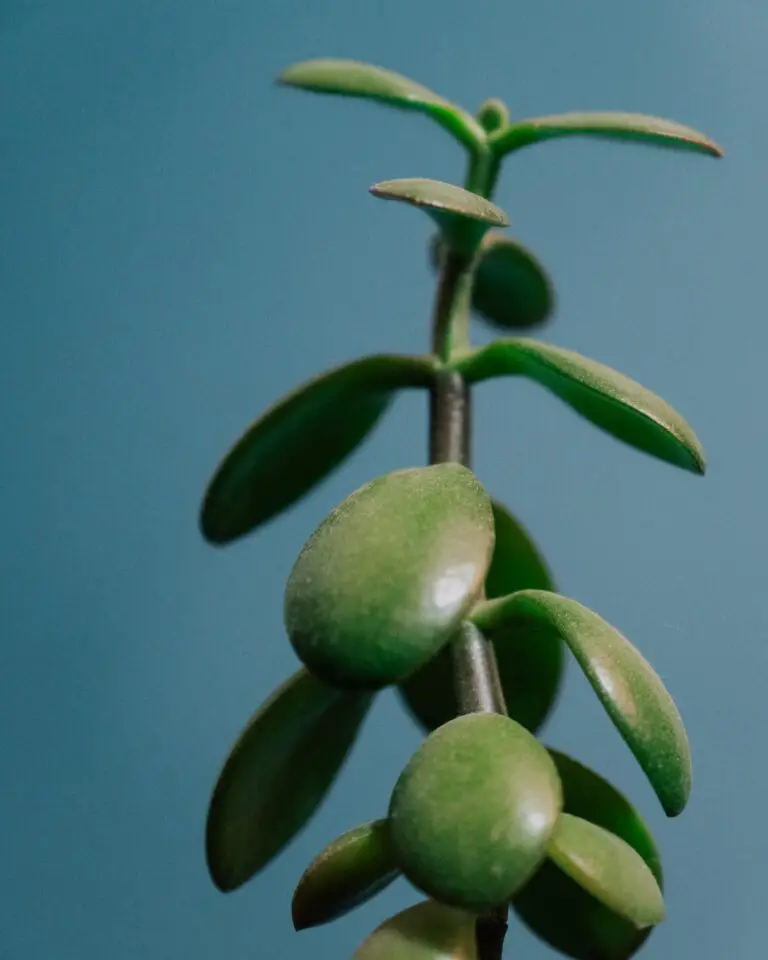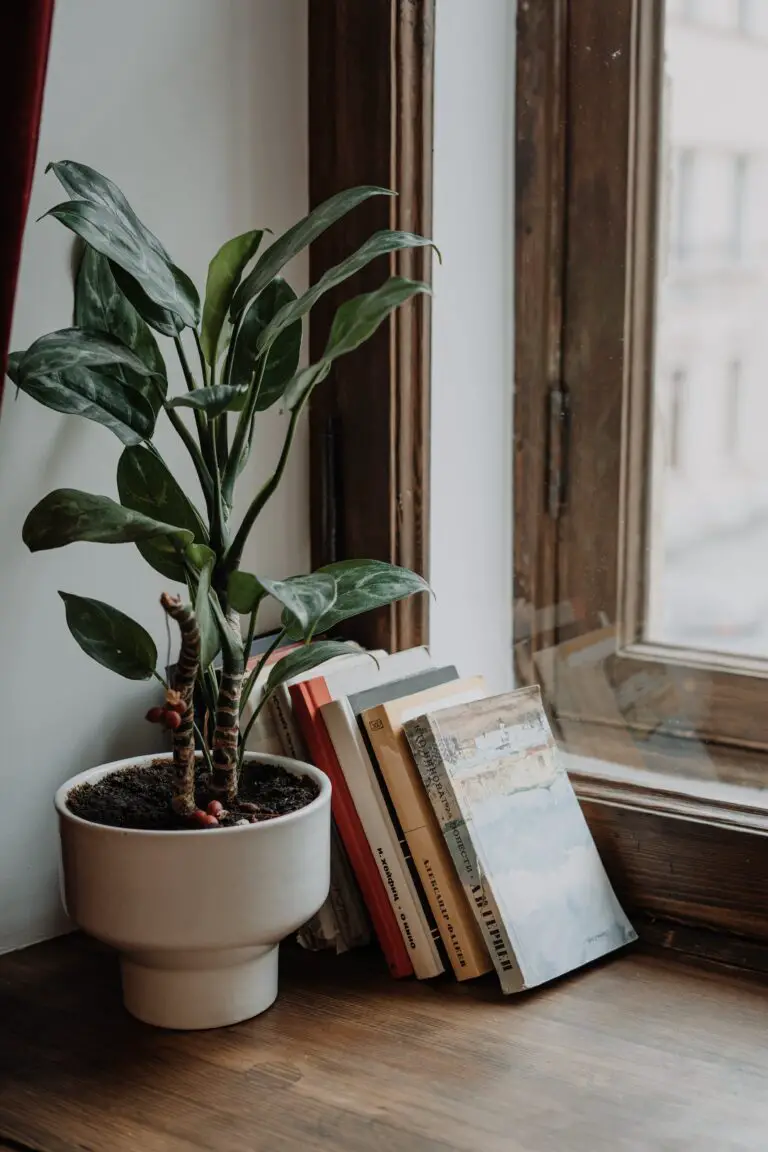Introduction: The Magic of Crassula Propagation
Discover the simplicity and joy of multiplying your crassula plants through the process of leaf propagation. This introduction sets the stage for the transformative journey from single leaf to robust succulent. Picture this: You have a crassula plant, its plump leaves clustered like a gathering of green gems. Now imagine being able to take a piece of that beauty and coax it into a whole new plant. The magic of propagation is real, and crassulas are one of nature’s best pupils in the art of multiplication.

Think of leaf propagation like a cloning spell—it’s a small piece of enchantment at your fingertips. Real-life stories abound of gardeners who began with one modest crassula leaf, only to see it spawn a cornucopia of succulent splendor. In a matter of weeks, roots emerge, reaching down into the soil like anchors, securing a future for the tiny leaf and promising a burst of new growth.
For those who have not yet delved into the rewarding practice of crassula propagation care, fear not. The process is forgiving and surprisingly easy. It’s nature’s way of giving, asking little more than patience and a gentle touch in return. And the results are always worth the wait.
If you’re looking for more guidance on nurturing your succulent collection, our article on Senecio Succulent Secrets is brimming with tips to keep your succulents flourishing.
As we embark on this journey, remember that each crassula leaf has the potential to unfold into a life of its own, branching out to add lushness and vitality to your environment. In the upcoming sections, we’ll delve into the step-by-step process, the care tips, and the joys that await in the world of crassula leaf propagation.
Understanding Crassula: A Succulent Overview
Welcome to the delightful world of Crassula, a genus of succulent plants that captivates plant enthusiasts with its effortless charm and robustness. Imagine a plant so versatile that with just a single leaf, it embarks on a journey of regeneration, creating a brand new individual as if by magic. That’s the superpower of Crassula! It’s not just a plant; it’s a symbol of nature’s resilience and ingenuity.
These succulents stand out with their thick, fleshy leaves, alluring geometric shapes, and an uncanny ability to thrive in less-than-ideal conditions. Take, for example, the popular Crassula ovata, commonly known as the Jade Plant. It’s like the superhero of houseplants, battling dry spells with stoic patience and greeting neglect with a flourish of greenery. It’s no wonder they are often passed down through generations, becoming storied members of family history.
Now, why are Crassulas so good at propagating from their leaves? It boils down to their exceptional genetic toolkit. These succulents come equipped with cells that have high levels of totipotency — a fancy term that just means their cells have the potential to develop into a complete, new plant. This is why a fallen leaf can casually root itself and flourish into an eye-catching succulent. It’s akin to an artist finding inspiration in a single brushstroke, becoming a masterpiece in its own right.
To witness this wonder in the comfort of your own home, take a look at this video on leaf and cutting propagation of the resourceful Crassula. It’s a visual journey showing how these resilient beauties take root and grow, instilling hope and green thumbs in us all.
If you’re keen to explore more and dive deeper into crassula propagation tips, our article “Crassula Species: Unraveling the Succulent Wonders” opens up a treasury of information to turn your thumb even greener!
With Crassula, each leaf is a new beginning, a fresh shot at life, equipped with all it needs to sprout roots and reach for the sun. These succulents don’t just survive; they tell a story of endurance and proliferation, a testament to life’s incredible capacity for regeneration. So next time you spot a Crassula, remember, you’re not just looking at a plant — you’re beholding a tapestry of growth and endless possibilities.
Selecting Leaves for Propagation
Embarking on the journey of leaf propagation with your Crassula, or commonly known as jade plants, is as thrilling as it is rewarding. The secret to unlocking a garden of these succulent beauties lies in the very leaves you choose to cultivate. But fret not, for you won’t need a botany degree to pick the winners—just a keen eye and a tender touch.
Envision yourself as a talent scout in the verdant world of succulents, seeking out the healthiest and most promising candidates. What you’re after are leaves that exude vitality, plump and vibrant, free from any unsightly spots, damage, or discoloration. And here’s a tip: by gently wiggling the leaf back and forth, an ideal candidate will part from its stem with the grace of a ballroom dancer—no force necessary. The perfect leaf will be a complete piece, a mirror of its parent’s glory, not torn or incomplete. These plant parenthood tips are a treasure trove for selecting the best possible start for your propagation journey.
Real-life examples are aplenty, as countless succulent enthusiasts have whispered their successes to the wind. There’s Jane from down the road, who by choosing robust, green leaves, now boasts a window sill of Crassula ovatas, each one a testament to her judicious selection. Or Jack from the office, whose thumb wasn’t so green after all, until he learned the art of the gentle twist—now, his balcony is a succulent sanctuary.
Let us delve into a visual narrative with this excellent video, which paints a picture clearer than words could describe:
Remember, when propagating Crassula from leaves, the choices you make at the very beginning will echo through the life of your new plants. So, choose wisely, propagate patiently, and soon you’ll be surrounded by the lush success of sprouted succulents.
The Rooting Process Unearthed
Embarking on the journey of propagating your crassula from leaves is akin to diving into a miniature world of wonder. This process, my green-thumbed friend, is where the rubber meets the road—or should I say, where the leaf meets the soil. Let’s roll up our sleeves and delve into the step-by-step instructions that you’ll need to cultivate roots from your resilient succulent leaves. And fear not, for these methods are tried-and-true, inspired by the success stories of avid gardeners far and wide.
Firstly, once you’ve selected a healthy and plump leaf from your beloved crassula, it’s time to let the magic of callousing take place. Callousing? Yes! It’s the process where the leaf wound dries and hardens, a natural band-aid that preps it for rooting. Simply lay your leaf on a piece of paper or a mesh screen and give it a few days of rest in a warm, dry spot—just like letting a fine wine breathe before indulging.

Next, the plot—or pot—thickens. After your leaf has calloused, it’s time to introduce it to a well-draining soil mix, specifically concocted for succulents, to ensure your leaf stands the best chance in this terraformed theater. Nestle your leaf atop the soil; no need to bury it, as it simply needs to make contact with the earth beneath. It’s a bit like tucking it into bed, snug and secure, ready for the magic of growth to occur.
Keep the environment around your leaf as nurturing as possible. This means regulating the moisture like a maestro—enough to encourage roots but not so much as to invite rot. A gentle spritz of water when the soil starts a gossip about being too dry should suffice. And let there be light—but not too direct, for our little leaf is not yet a full-blown sun worshipper. Bright, indirect light will be its guiding star to sprouting success.
Patience, dear gardener, is the unspoken hero of propagation. Roots may take their time, as they’re in no rush to break out into daylight. Some may emerge within a few weeks, while others prefer a leisurely pace, stretching out to make their grand entrance. While you wait, explore more about thriving with succulents through insightful articles such as Crassula Marginalis Care Secrets: Thriving Succulent Tips to augment your grounding in succulent care.
Finally, when those tiny tendrils of roots start venturing out, meet their bravery with a celebration of subtle watering and whispers of encouragement. Before you know it, a new rosette will begin its ascent, and you’ll be the proud overseer of a new generation of crassula. Remember, this is just the first act in the thrilling play of propagation. Stay tuned as your little leaf takes on the world, one root and sprout at a time!
Creating the Perfect Propagation Environment
Imagine a little leaf, plucked from the mother Crassula—it’s on the verge of sparking new life, but it needs just the right nudge from you. That nudge? The perfect environment. Let’s talk about the elements that can make or break your succulent success story.
Temperature: Your Cozy Little Greenhouse
First up, temperature. These little leafy bits are not fans of the cold. They crave warmth—think of the cozy spot where your cat sunbathes or where you’d drape a blanket over a chair. A steady temperature range, generally between 65°F and 75°F, will get those Crassula leaves feeling like they’re in a mini greenhouse, minus the glass!
Humidity: The Fine Mist of a Morning Dew
Crassula leaves need a gentle touch when it comes to humidity. Too dry, and they’ll shrivel up, dreaming of juicier days. Too moist, and they might start to rot before they can root. Aim for a balance that resembles the fine mist of a morning dew. Some plant propagators like to create a humidity dome with clear plastic—a makeshift terrarium of sorts—allowing the leaves to access moisture without getting waterlogged.
Light: Like a Soft Sunrise
Now, let’s shine some light on the situation—but not too much. Direct sunlight is a no-no for these young propagules. Instead, they thrive under bright, indirect light, much like a soft sunrise that gently coaxes the day awake. A north-facing window or a shaded spot that still catches rays of light is ideal. It’s all about giving them the warmth of the sun’s glow without the harshness of its gaze.
Soil: The Bedrock of Success
Laying down the right foundation is crucial, and in the world of propagation, that means soil. Opt for a well-draining mix that’s like a fluffy cloud for roots to bed in. Avoid dense, wet soils that could lead to decay; your goal is a light, airy mix where roots can breathe and grow without being waterlogged.
Check out this informative video to visualize the perfect care for your Crassula leaves as they embark on their journey to full-fledged succulents:
Remember, patience is the sidekick of propagation. Pay attention to these environmental needs, and before you know it, you’ll be a witness to the magical unfolding of new life from just a simple leaf. Stay curious, keep experimenting, and you’ll master how to propagate Crassula from leaves, turning tiny leaves into bountiful succulent gardens.
Transitioning to Pots: Caring for New Crassula Plants
The moment has arrived – those plump Crassula leaves you’ve nurtured have sprouted roots, symbolizing the promise of new life! It’s time to embark on the exciting journey of transplanting your little green protégés into their very own pots. Let’s dig into the essentials for a seamless transition that sets them up for a lifetime of lush growth.
First things first, selecting the perfect residence for your young Crassula plants is akin to choosing a home that shapes their future. A pot with adequate drainage is non-negotiable – think of it as the foundation of a stable home. Ceramic or terracotta pots with drainage holes are like well-ventilated homes that prevent moisture issues and promote a healthy root system.

Now, onto the potting mix – the neighborhood your Crassula will thrive in. A succulent’s best friend is a well-draining soil mix, the sandy loam soils packed with nutrients yet free from waterlogging woes. Consider blending some perlite or pumice into your mix for that extra aeration and drainage – your Crassula seedlings will thank you!
Watering is where many a green thumb has faltered. Think of water as the community events for your plants – essential but best in moderation. Establishing a consistent yet sparing watering schedule ensures your young plants get just enough to thrive without the dreaded root rot. The golden rule? Let the soil dry out between waterings, a suspenseful wait that guarantees a rewarding gulp for your little Crassula.
Finally, the setting – a stage for your Crassula to perform. Gradual introduction to sunlight mirrors the gentle acclimation to a new neighborhood. Start with indirect light, a soft morning sun caressing the leaves, slowly acclimating them to the full sun’s embrace, just like a warm community welcome.
Embarking on the pot transitioning adventure can feel akin to waving off your little ones to kindergarten for the first time. Yet, with the right pot, a nurturing soil mix, and a tender watering regime, you’re providing the springboard for those crassula leaves to blossom into independent, thriving succulents.
Troubleshooting Common Propagation Pitfalls
Have you ever eagerly awaited the sprouting of new life from your carefully planted crassula leaves, only to be met with disappointment? You’re not alone. While propagation can seem simple, many enthusiasts encounter stumbling blocks along the way. Let’s dive into a gardener’s troubleshooting guide to nip those pesky problems in the bud.
Rotten Luck: Combating Rot in Crassula Propagation
Rot is the bane of propagation, turning plump leaves into mushy, discolored messes. This all-too-common issue often stems from excessive moisture. Imagine laying your leaf on a moist substrate and, instead of witnessing a mini meadow of miniature crassulas, you find a decomposing leaf. The solution? Less is more. Water sparingly and ensure your substrate is well-draining. Balance is key—a habitat too damp spells doom, too dry, and your leaf may shrivel before it has a chance to shine.
The Pesty Side of Propagation
Pest infestations can ambush your propagation efforts, turning your crassula nursery into a feast for unwelcome guests. Aphids, mealybugs, and spider mites can wreak havoc unnoticed, until your once vibrant leaves are speckled with damage. Jill, a seasoned succulent lover from Arizona, shares her ordeal of mealybugs turning her propagation tray into a bug bed-and-breakfast. Her fix? A vigilant routine of inspecting leaves and a gentle, organic insecticide saved her future succulent stars. Stay on the lookout and act swiftly to keep your crassula leaves free from pestering parasites.
When Growth Takes a Timeout
Impatience with crassula propagation can lead gardeners to assume the worst when growth isn’t visible. But growth beneath the soil’s surface often goes unseen. Take the tale of Sam, who almost gave up on his leaf cuttings after a month of no change—not realizing that roots were forming in the shadows. Patience is a virtue in propagation. Give it time, and be rewarded with a burst of green glory once those roots decide to show off their hard work.
And for a visual experience filled with extra tips and tricks, let’s watch this informative video on overcoming the trials of succulent propagation:
Frequently Asked Questions
Propagating Crassula from leaves, you say? Well, you’re in luck! Let’s roll up our sleeves and get to the nitty-gritty of sprouting these plump little beauties. Imagine you’re sitting at home, looking at your crassula (also known as jade plants), and thinking, “I wish I had more!” We’ve all been there, right? The good news is, leaf propagation is like magic – a single leaf can give you a whole new plant!
Can You Really Propagate Crassula from Just a Leaf?
Absolutely! It may seem like one of nature’s well-kept secrets, but propagating crassula from a fallen leaf is not only possible, it’s quite simple. Here’re the cliff notes: pluck a healthy leaf, let it callous over, pop it on some well-draining soil, and keep it in the right conditions. Voila, watch as tiny roots and a miniature plant appear. It’s like turning one puzzle piece into a whole new puzzle.
How Long Does It Take for Crassula Leaves to Sprout?
Patience, grasshopper! The Crassula family doesn’t race to the finish line – they’re more of a ‘slow and steady wins the race’ kind of plant. Generally, it takes a few weeks for roots to appear and a couple of months before you’ll see a new plantlet ready to grow into its own pot. It’s like waiting for your favorite avocado to ripen – it’s definitely worth it!
What Are the Best Conditions for Propagating Crassula Leaves?
Think Mediterranean – not too wet, not too dry. Crassula leaves thrive in bright, indirect sunlight with a sprinkle of warmth. Avoid direct scorchers like a midday summer sun and make sure the soil is like that one friend – supportive but not overwhelming. Too much moisture is the archenemy of propagation, causing those valuable leaves to rot before they get a chance to strut their stuff.
Need a visual guide? Check out this super helpful video on propagating succulents from leaves:
Is It Better to Propagate Crassula Leaves in Water or Soil?
It’s the classic conundrum every succulent enthusiast faces. While some swear by water propagation for its faster root growth and the thrill of seeing the process in a clear vessel, soil propagation is the traditional route with a track record of robust plants. Think of water propagation as the exciting but variable stock market, and soil as your slow-growth, reliable savings account.
Can You Use Any Crassula Leaf for Propagation?
Choice is key here, my green-fingered friends! Aim for healthy, plump leaves that are free of blemishes, much like picking the perfect apple in the grocery store. Diseased or damaged leaves might not have the grit to sprout new life. So, go for gold and choose the best of the bunch for your propagation project.
Remember, every leaf is a potential new jade plant waiting to branch out into the world. Propagating crassula from leaves isn’t just about growing plants; it’s about spreading the joy of gardening, one leaf at a time.



